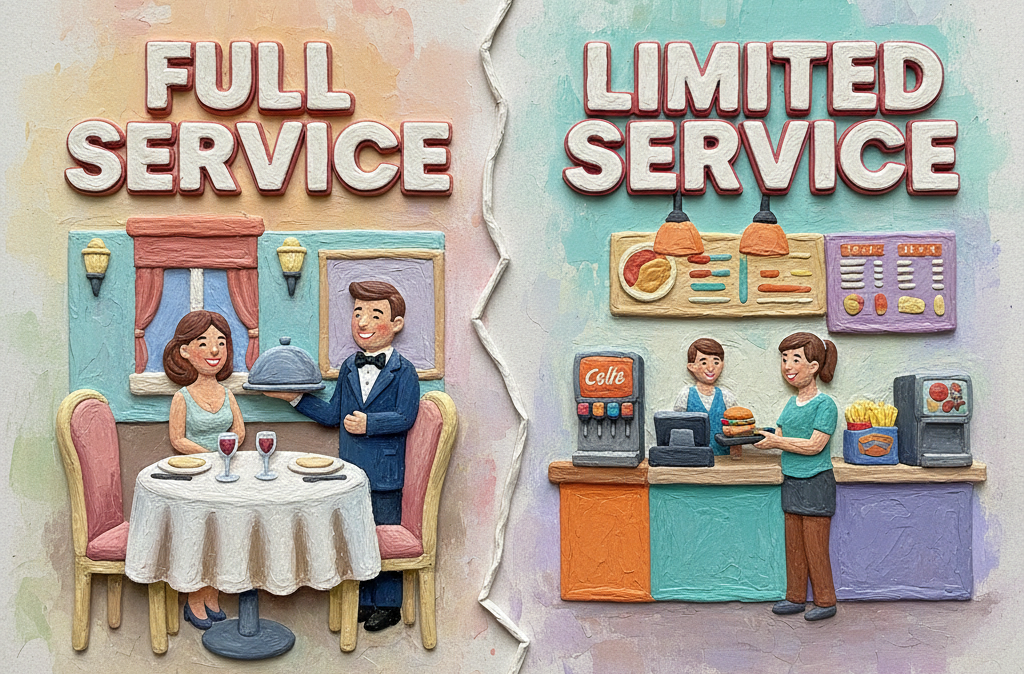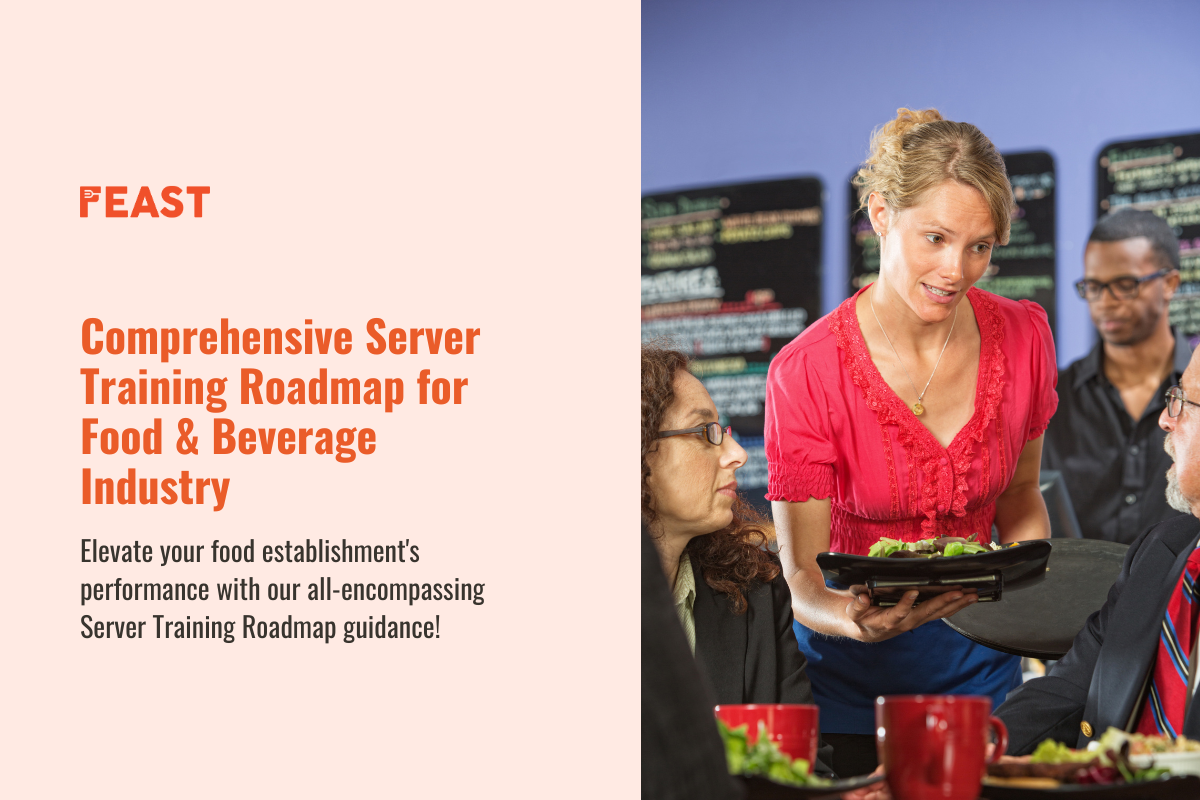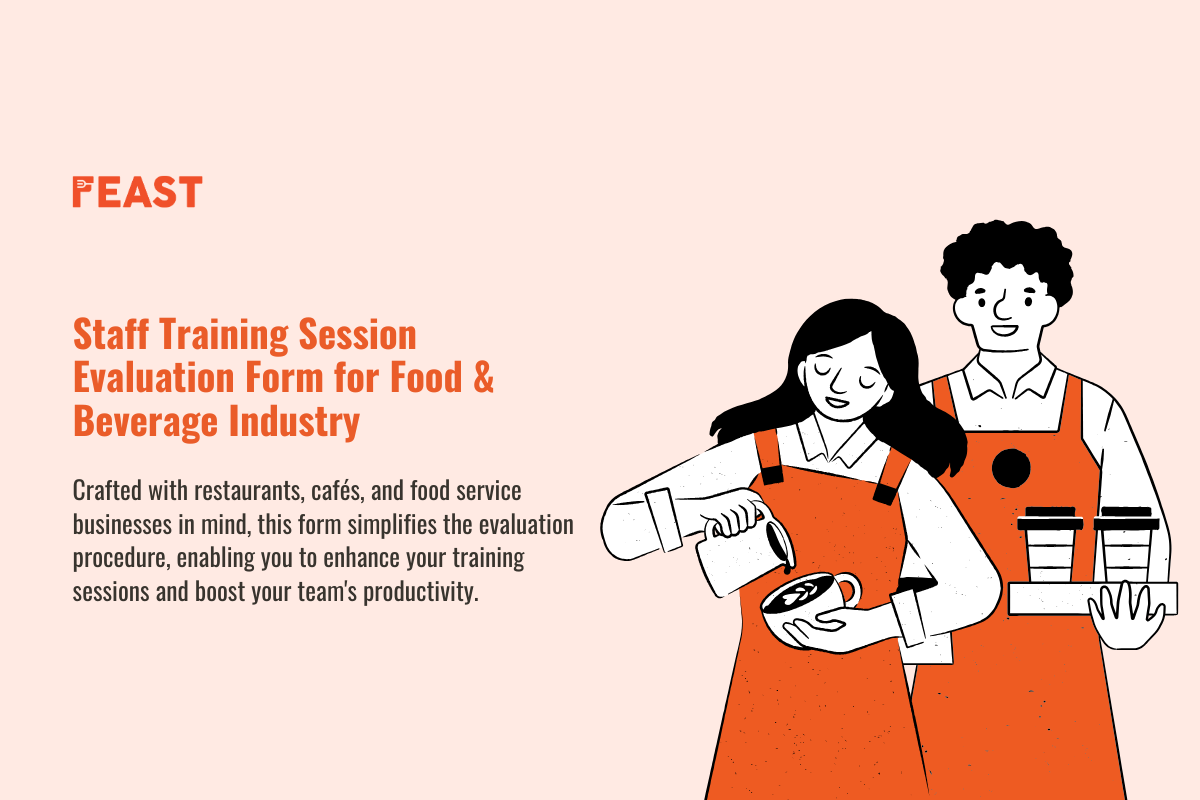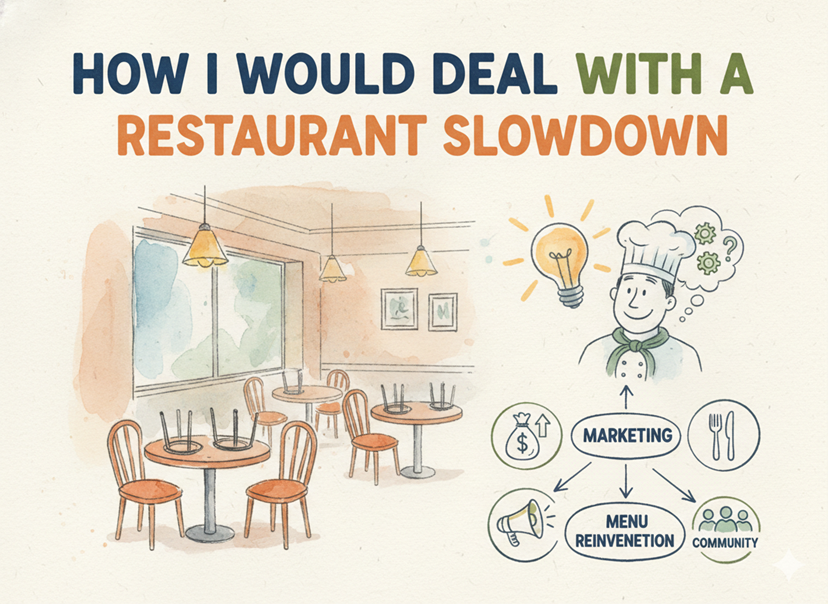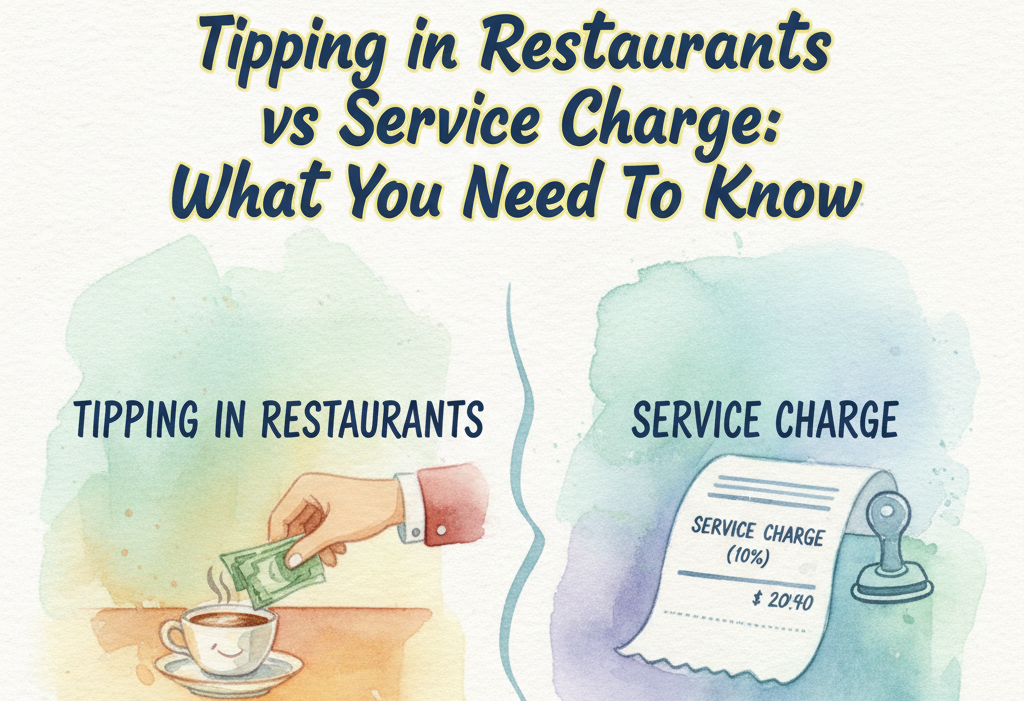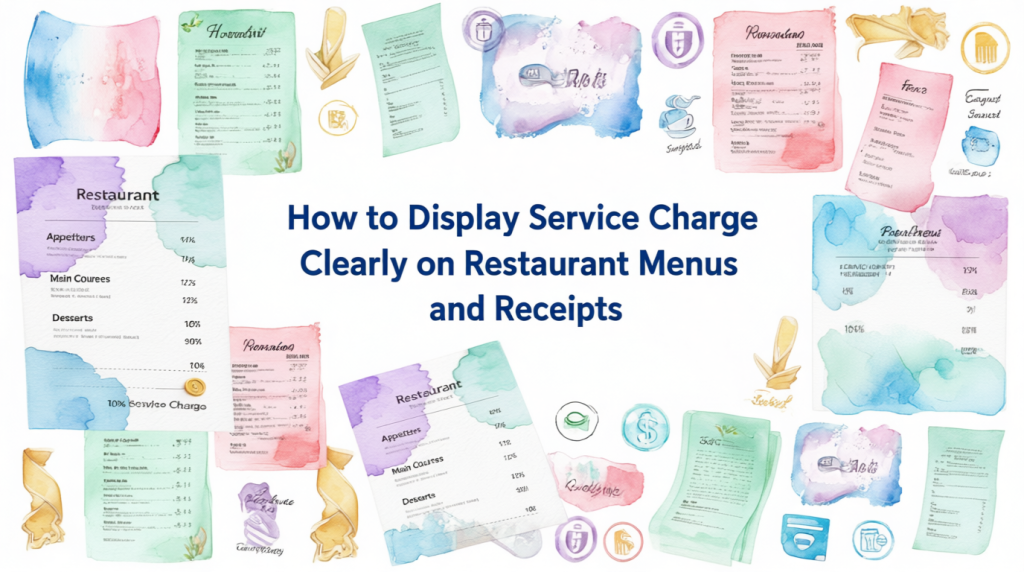When you think about building a food business, one of the first decisions you make is whether you want to run full-service restaurants or limited-service restaurants. Both models have their own charm, opportunities, and challenges. The type you choose will affect not just how you serve your customers but also what kind of staff you hire, how you price your menu, and even what technology you need to manage daily operations.
In Malaysia, both styles are growing steadily. According to Statista, the food service market in Malaysia is expected to grow by 7.89% annually between 2024 and 2029. That growth includes both full-service and limited service formats, showing that people want options, sometimes a quick meal, sometimes a slow dining experience. If you understand these two styles well, you can decide where your business fits best.
What is a Full Service Restaurant?
Full-service restaurants are the traditional sit-down eateries. Here, customers walk in, take a seat, and are served by staff at the table. The entire experience is built around hospitality, comfort, and creating a memorable meal.
Think of places like Secret Recipe, TGIF, or Italiannies in Malaysia. These are full-service restaurant examples where customers expect menus, attentive staff, and multiple courses if they want. People usually spend more time here, whether for family gatherings, business meetings, or celebrations.
The big advantage is that you can create a stronger brand identity and build loyalty through service and ambiance. But it also comes with higher costs. You need more staff, better-trained waiters, and usually a larger space. On average, the spend per customer is higher in this format, but so are your expenses.
What is a Limited Service Restaurant?
Limited service restaurants are all about speed and convenience. Customers usually order at the counter or kiosk, pay first, and either take their food away or eat quickly at the outlet. There is little or no table service.
Some popular limited-service restaurant examples in Malaysia are McDonald’s, KFC, and Texas Chicken. These places focus on fast preparation and consistency. Customers know they will get the same taste and service each time, with minimal waiting.
The strength of this model is efficiency. You need fewer staff compared to a full-service setup, and your costs are lower. But customer expectations are also different. They come for affordable prices, speed, and reliability, not for a long dining experience.
Comparing the Characteristics
If you compare the two, the first big difference is service style. Full service relies on waitstaff and personalized service, while limited service focuses on counter or kiosk ordering.
Space also plays a role. Full-service restaurants usually need larger dining areas, decorated interiors, and sometimes even private rooms. Limited service outlets can operate in smaller spaces, like malls or petrol stations, because the focus is on quick turnover.
The financial picture also differs. For instance, in Malaysia, the average spend per person at a full-service outlet can be around RM35–RM60, depending on the cuisine, while limited service outlets often see spending in the RM10–RM25 range. That means you’ll earn more per customer in full service, but your overheads (rent, salaries, décor, training) will also be higher. In limited service, your earnings per order are smaller, but the sheer volume of orders makes up for it.
Customer mindset is another factor. People go to full-service restaurants for experiences and occasions. They choose limited service restaurants when they want convenience, affordability, and speed.
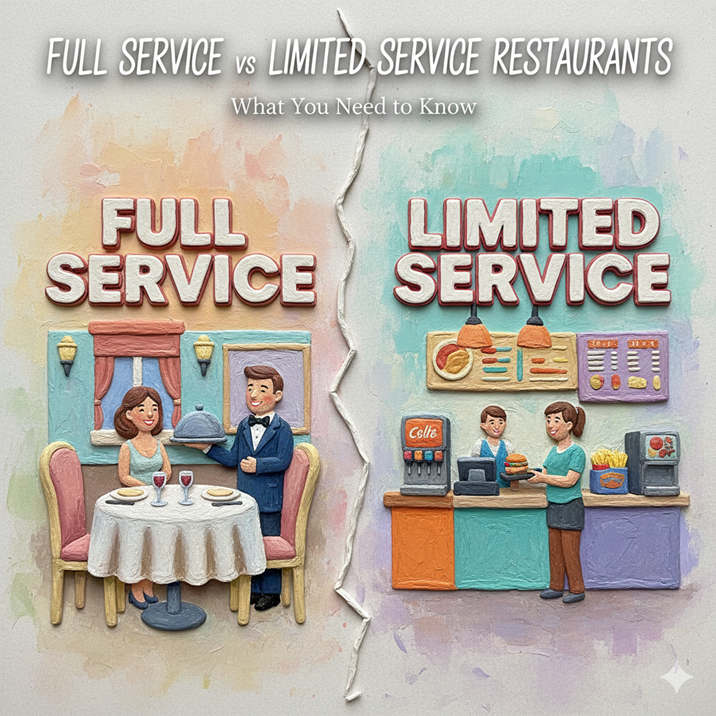
What Technology Does a Full-Service Restaurant Need?
Technology can make or break your operations. For full-service restaurants, you need tools that can handle detailed orders, multiple courses, and even split bills when customers dine in groups.
A POS for a full-service restaurant should allow you to take orders at the table, send them directly to the kitchen, and track changes instantly. This avoids confusion and saves time. A full-service restaurant POS should also include reservation management, table mapping, and options for loyalty programs.
Kitchen printers are also vital. They make sure chefs get accurate, real-time updates. When combined with inventory management, it helps reduce wastage, which is a big issue. According to Food Waste Malaysia, around 16,688 tonnes of food is wasted daily in the country, with 24% of it still edible. With proper technology, you can track stock, reduce waste, and save costs.
What Technology Does a Limited Service Restaurant Need?
For limited service restaurants, the technology requirements are different. Speed and accuracy matter more than table management.
You’ll need self-ordering kiosks, mobile ordering apps, or QR-based ordering systems. These reduce waiting times and free up staff to focus on preparation. A strong POS for limited service restaurants should integrate online delivery platforms like GrabFood and Foodpanda. In Malaysia, Statista reports that the online food delivery market is projected to reach RM6.37 billion in 2025. So, integration with delivery apps is no longer optional.
Inventory tracking is also critical. Because limited service restaurants often deal with high volumes of ingredients like chicken, rice, or buns, your system should automatically update stock levels after each order. This ensures you don’t run out during peak hours.
Customer data collection is another area. Even if people don’t stay long, you can capture their preferences through loyalty apps or membership programs. This helps build repeat business, even in a fast-paced format.
Both full-service restaurants and limited-service restaurants have their strengths. Your choice depends on whether you want to focus on creating experiences or on speed and affordability.
If you go with a full-service setup, invest in a full-service restaurant POS, reservation systems, and inventory tools that help reduce waste and improve efficiency. If you choose limited service, focus on kiosks, delivery integrations, and a system that can handle high-volume orders without errors.
The key is to use technology that matches the needs of your format. That way, you can give your customers exactly what they expect and keep your business efficient. Whether you choose fine dining or fast food, both models can succeed in Malaysia if you build them on the right foundation. And as more people look for dining options, both full-service and limited-service restaurants will continue to play a big role in the food industry.

